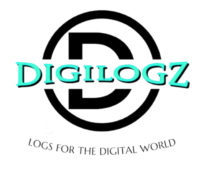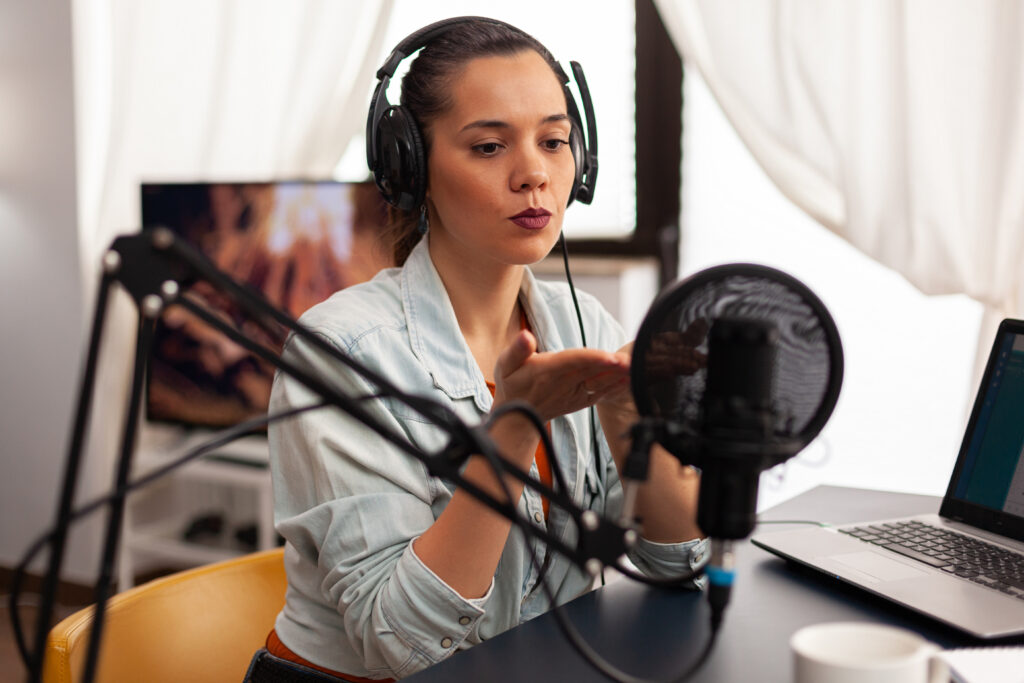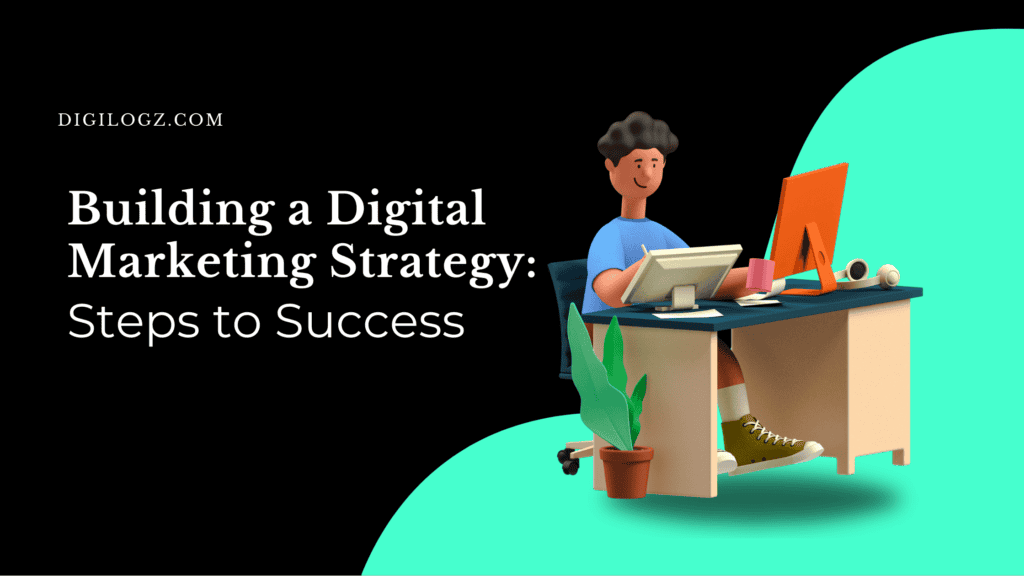Creating a solid influencer marketing strategy is essential for brands looking to leverage the power of influencers to increase brand awareness, drive engagement, and ultimately, boost sales. Here’s a step-by-step guide to help you develop an effective influencer marketing strategy.
Creating a Solid Influencer Marketing Strategy
1. Define Your Goals and Objectives:
Start by clearly defining your goals and objectives for the influencer marketing campaign. Are you looking to increase brand awareness, drive website traffic, boost sales, or enhance brand credibility? Having specific and measurable goals will guide your strategy and help you track the success of your campaign.
2. Identify Your Target Audience:
Understand who your target audience is and where they spend their time online. Identify key demographics, interests, and behaviors to ensure that you’re partnering with influencers who have a relevant and engaged following that aligns with your target market.
3. Research and Identify Potential Influencers:
Conduct thorough research to identify potential influencers who resonate with your brand values and target audience. Look for influencers who create content that aligns with your brand’s messaging and aesthetic, and who have a genuine connection with their followers.
Consider factors such as follower demographics, engagement rates, content quality, and past collaborations when evaluating potential influencers for your campaign.
4. Establish Your Budget and Compensation Structure:
Determine your influencer marketing budget and establish a compensation structure for your influencers. Compensation can vary based on factors such as the influencer’s reach, engagement rate, and the scope of the campaign.
Options for compensation include flat fees, commission-based partnerships, free products or services, or a combination of these. Be transparent with influencers about compensation from the outset to avoid misunderstandings later on.
5. Develop Clear Campaign Guidelines and Briefs:
Provide influencers with clear campaign guidelines and briefs outlining the objectives, messaging, deliverables, and any specific requirements or restrictions for the campaign. Be sure to communicate your brand’s values and voice, as well as any key messages or calls to action you want the influencers to convey.
Encourage creativity and collaboration while ensuring that the content aligns with your brand’s image and objectives.
6. Foster Authentic Relationships with Influencers:
Build genuine relationships with influencers based on trust, respect, and mutual benefit. Engage with influencers on social media, share their content, and show appreciation for their work.
Communicate openly and transparently throughout the campaign, and be receptive to feedback and suggestions from influencers.
7. Track and Measure Campaign Performance:
Use analytics tools and metrics to track and measure the performance of your influencer marketing campaign. Monitor key performance indicators such as reach, engagement, website traffic, conversions, and return on investment (ROI).
Analyze the data to evaluate the effectiveness of your campaign, identify areas for improvement, and inform future influencer marketing strategies.
8. Cultivate Long-Term Relationships:
Nurture ongoing relationships with influencers beyond individual campaigns. Invest in building long-term partnerships with influencers who have demonstrated value and alignment with your brand over time.
Long-term collaborations can lead to deeper connections with your target audience, increased brand loyalty, and sustained business growth.
Selecting Influencers for Your Campaigns
Step 1: Define Your Goals and Target Audience
Before diving into influencer research, it’s crucial to define your goals and identify your target audience. What are you hoping to achieve with your influencer marketing campaign? Are you looking to increase brand awareness, drive website traffic, or boost sales? Once you’ve clarified your objectives, narrow down your target audience based on demographics, interests, and purchasing behavior.
Step 2: Identify Potential Influencers
Now it’s time to start searching for influencers who align with your brand values and resonate with your target audience. Start by exploring social media platforms such as Instagram, YouTube, TikTok, and Twitter. Look for influencers who create content relevant to your industry or niche and have an engaged and loyal following.
Step 3: Evaluate Influencer Metrics
When evaluating potential influencers, there are several key metrics to consider:
- Follower Count: While a high follower count can indicate reach, it’s essential to look beyond the numbers and consider the quality of engagement.
- Engagement Rate: Pay attention to likes, comments, shares, and other forms of engagement to gauge the influencer’s level of interaction with their audience.
- Audience Demographics: Analyze the influencer’s audience demographics to ensure they align with your target market.
- Content Quality: Evaluate the quality of the influencer’s content, including visual aesthetics, storytelling ability, and overall brand alignment.
Step 4: Conduct Platform-Specific Research
Different social media platforms offer unique opportunities for influencer marketing. Here’s a breakdown of some popular platforms and their suitability for influencer marketing:
- Instagram: Ideal for visually appealing content, lifestyle brands, and fashion influencers.
- YouTube: Suitable for longer-form video content, product reviews, tutorials, and entertainment.
- TikTok: Perfect for short-form, creative content, and reaching younger demographics.
- Twitter: Great for real-time engagement, trending topics, and industry-specific conversations.
Consider which platforms align best with your brand and target audience and prioritize influencers with a strong presence on those platforms.
Step 5: Reach Out and Build Relationships
Once you’ve identified potential influencers, it’s time to reach out and start building relationships. Personalize your outreach messages, highlight why you believe they’re a good fit for your brand, and be transparent about your expectations and goals. Remember, building genuine connections is key to successful influencer partnerships.
Step 6: Collaborate on Content Creation
Collaborate with your chosen influencers to create authentic and engaging content that resonates with their audience while promoting your brand. Provide clear guidelines and objectives, but also give influencers creative freedom to showcase your products or services in a way that feels genuine and organic.
Step 7: Track and Measure Success
Finally, track and measure the success of your influencer marketing campaigns using relevant metrics such as website traffic, conversion rates, social media engagement, and brand sentiment. Use this data to refine your strategy, optimize future campaigns, and continue building meaningful relationships with influencers.
Top Tools and Platforms for Influencer Marketing
Influencer marketing has become a powerful tool for businesses to connect with their target audience and drive brand awareness and sales. To maximize the effectiveness of influencer marketing campaigns, it’s essential to leverage the right tools and platforms. Here are some of the top tools and platforms for influencer marketing and how to use them effectively:
1. Social Media Platforms
Social media platforms such as Instagram, YouTube, TikTok, Twitter, and Facebook are the bread and butter of influencer marketing. Each platform offers unique opportunities for brands to collaborate with influencers and reach their target audience.
How to Use:
- Identify influencers relevant to your industry or niche on each platform.
- Engage with influencers by liking, commenting, and sharing their content.
- Reach out to potential influencers through direct messages or email to discuss collaboration opportunities.
- Use platform-specific features such as Instagram Stories, YouTube videos, or TikTok challenges to create engaging content with influencers.
2. Influencer Marketing Platforms
There are several influencer marketing platforms that connect brands with influencers and facilitate collaboration. These platforms offer features such as influencer discovery, campaign management, performance tracking, and payment processing.
How to Use:
- Sign up for an influencer marketing platform and create a brand profile.
- Use search filters to find influencers based on criteria such as demographics, interests, and engagement metrics.
- Reach out to influencers directly through the platform to discuss campaign details and negotiate terms.
- Track campaign performance and analyze metrics such as reach, engagement, and ROI using the platform’s analytics tools.
3. Influencer Relationship Management (IRM) Tools
IRM tools help brands manage relationships with influencers, track communication, and streamline collaboration processes. These tools often include features such as influencer database management, CRM integration, and campaign workflow automation.
How to Use:
- Import influencer contact information and communication history into the IRM tool.
- Segment influencers based on criteria such as audience demographics, engagement levels, and past collaboration history.
- Set up automated workflows for outreach, negotiation, content approval, and payment processing.
- Monitor and track influencer relationships and campaign performance using the tool’s reporting and analytics features.
4. Content Creation and Collaboration Tools
Content creation and collaboration tools help brands and influencers collaborate on content creation, streamline the approval process, and ensure brand consistency across campaigns. These tools often include features such as content briefs, collaboration boards, and content scheduling.
How to Use:
- Create detailed content briefs outlining campaign objectives, messaging guidelines, and creative requirements.
- Collaborate with influencers in real-time using collaboration boards or shared documents to brainstorm ideas and develop content concepts.
- Use content scheduling features to plan and schedule content publication dates across multiple platforms.
- Provide feedback and approvals on content drafts to ensure alignment with brand guidelines and messaging.
5. Analytics and Reporting Tools
Analytics and reporting tools help brands track and measure the performance of influencer marketing campaigns. These tools provide insights into key metrics such as reach, engagement, website traffic, conversions, and ROI.
How to Use:
- Integrate analytics and reporting tools with social media platforms and influencer marketing platforms to track campaign performance.
- Monitor key metrics in real-time and analyze trends to identify areas for optimization.
- Generate custom reports to share campaign results with stakeholders and make data-driven decisions for future campaigns.
- Use A/B testing and experimentation to optimize campaign strategies and maximize ROI.
Influencer Marketing Best Practices
Influencer marketing has emerged as a powerful strategy for brands to connect with their target audience, build trust, and drive engagement and sales. However, to maximize the effectiveness of influencer marketing campaigns, it’s essential to follow best practices. Here are some influencer marketing best practices to help brands achieve success:
1. Set Clear Objectives and Goals
Before diving into influencer marketing, it’s crucial to define clear objectives and goals for your campaign. Whether you’re aiming to increase brand awareness, drive website traffic, boost sales, or improve brand sentiment, having specific, measurable goals will help guide your strategy and measure success.
2. Identify the Right Influencers
Not all influencers are created equal, and it’s essential to identify influencers whose values, interests, and audience demographics align with your brand. Look beyond follower count and engagement rates to ensure authenticity and relevance. Consider factors such as audience demographics, content quality, brand affinity, and past collaborations when selecting influencers for your campaign.
3. Build Genuine Relationships
Building genuine relationships with influencers is key to successful influencer marketing campaigns. Take the time to engage with influencers on social media, comment on their posts, and show genuine interest in their content. When reaching out to influencers, personalize your communication and highlight why you believe they’re a good fit for your brand. Building trust and rapport with influencers will make collaboration smoother and more authentic.
4. Provide Creative Freedom
One of the reasons influencer marketing is so effective is because influencers have a unique voice and style that resonates with their audience. Give influencers creative freedom to develop content that aligns with their personal brand while staying true to your brand guidelines and messaging. Authenticity is key in influencer marketing, and overly scripted or promotional content can come across as inauthentic and turn off audiences.
5. Develop Clear Campaign Briefs
While giving influencers creative freedom, it’s also essential to provide clear campaign briefs outlining campaign objectives, messaging guidelines, and deliverables. Be specific about the type of content you’re looking for, the key messages you want to convey, and any specific calls to action. Clear communication and alignment between brands and influencers are crucial for successful collaboration.
6. Measure and Analyze Performance
Tracking and measuring the performance of influencer marketing campaigns is essential for understanding what works and what doesn’t. Use metrics such as reach, engagement, website traffic, conversions, and ROI to evaluate campaign effectiveness. Analyze data to identify trends, optimize campaign strategies, and inform future decision-making. Don’t forget to communicate campaign results to stakeholders and celebrate successes.
7. Maintain Transparency and Disclosure
Transparency is critical in influencer marketing to maintain trust and credibility with audiences. Ensure that influencers disclose sponsored content and partnerships clearly and prominently, following guidelines set forth by regulatory bodies such as the Federal Trade Commission (FTC). Transparency builds trust with audiences and helps foster authenticity in influencer marketing relationships.
Top Tools and Platforms for Influencer Marketing
Influencer marketing has become a powerful tool for businesses to connect with their target audience and drive brand awareness and sales. To maximize the effectiveness of influencer marketing campaigns, it’s essential to leverage the right tools and platforms. Here are some of the top tools and platforms for influencer marketing and how to use them effectively:
1. Social Media Platforms
Social media platforms such as Instagram, YouTube, TikTok, Twitter, and Facebook are the bread and butter of influencer marketing. Each platform offers unique opportunities for brands to collaborate with influencers and reach their target audience.
How to Use:
- Identify influencers relevant to your industry or niche on each platform.
- Engage with influencers by liking, commenting, and sharing their content.
- Reach out to potential influencers through direct messages or email to discuss collaboration opportunities.
- Use platform-specific features such as Instagram Stories, YouTube videos, or TikTok challenges to create engaging content with influencers.
2. Influencer Marketing Platforms
There are several influencer marketing platforms that connect brands with influencers and facilitate collaboration. These platforms offer features such as influencer discovery, campaign management, performance tracking, and payment processing.
How to Use:
- Sign up for an influencer marketing platform and create a brand profile.
- Use search filters to find influencers based on criteria such as demographics, interests, and engagement metrics.
- Reach out to influencers directly through the platform to discuss campaign details and negotiate terms.
- Track campaign performance and analyze metrics such as reach, engagement, and ROI using the platform’s analytics tools.
3. Influencer Relationship Management (IRM) Tools
IRM tools help brands manage relationships with influencers, track communication, and streamline collaboration processes. These tools often include features such as influencer database management, CRM integration, and campaign workflow automation.
How to Use:
- Import influencer contact information and communication history into the IRM tool.
- Segment influencers based on criteria such as audience demographics, engagement levels, and past collaboration history.
- Set up automated workflows for outreach, negotiation, content approval, and payment processing.
- Monitor and track influencer relationships and campaign performance using the tool’s reporting and analytics features.
4. Content Creation and Collaboration Tools
Content creation and collaboration tools help brands and influencers collaborate on content creation, streamline the approval process, and ensure brand consistency across campaigns. These tools often include features such as content briefs, collaboration boards, and content scheduling.
How to Use:
- Create detailed content briefs outlining campaign objectives, messaging guidelines, and creative requirements.
- Collaborate with influencers in real-time using collaboration boards or shared documents to brainstorm ideas and develop content concepts.
- Use content scheduling features to plan and schedule content publication dates across multiple platforms.
- Provide feedback and approvals on content drafts to ensure alignment with brand guidelines and messaging.
5. Analytics and Reporting Tools
Analytics and reporting tools help brands track and measure the performance of influencer marketing campaigns. These tools provide insights into key metrics such as reach, engagement, website traffic, conversions, and ROI.
How to Use:
- Integrate analytics and reporting tools with social media platforms and influencer marketing platforms to track campaign performance.
- Monitor key metrics in real-time and analyze trends to identify areas for optimization.
- Generate custom reports to share campaign results with stakeholders and make data-driven decisions for future campaigns.
- Use A/B testing and experimentation to optimize campaign strategies and maximize ROI.
By leveraging these tools and platforms effectively, brands can streamline the influencer marketing process, build strong relationships with influencers, create compelling content, track campaign performance, and ultimately drive business growth.
Real-World Success Stories in Influencer Marketing
Real-world success stories in influencer marketing serve as inspiring examples of how brands can leverage the power of influencers to achieve their marketing goals and drive business growth. Here are a few notable examples:
1. Daniel Wellington
Daniel Wellington, a Swedish watch brand, is often cited as a prime example of successful influencer marketing. By collaborating with a network of fashion and lifestyle influencers on Instagram, Daniel Wellington transformed from a small startup to a global sensation. The brand strategically utilized influencer partnerships to increase brand awareness, drive website traffic, and generate sales. Their minimalist watches became a staple accessory among millennials and Gen Z, thanks in part to the aspirational lifestyle portrayed by influencers in their content.
2. Glossier
Glossier, a beauty and skincare brand, built a cult following by harnessing the power of user-generated content and influencer marketing. Instead of traditional advertising, Glossier relied on word-of-mouth recommendations and collaborations with beauty influencers to promote its products. By engaging with their community and empowering customers to share their experiences on social media, Glossier created a sense of belonging and authenticity that resonated with their target audience. The brand’s approach to influencer marketing helped fuel its rapid growth and establish a loyal customer base.
3. Airbnb
Airbnb, the popular online marketplace for lodging and experiences, has also seen success with influencer marketing. The brand partners with travel influencers and content creators to showcase unique accommodations and experiences around the world. By featuring authentic and aspirational content created by influencers, Airbnb inspires wanderlust and encourages travelers to book stays through their platform. The brand’s influencer marketing campaigns have helped drive brand awareness, increase bookings, and position Airbnb as a trusted authority in the travel industry.
4. Fashion Nova
Fashion Nova, an online fashion retailer, has become synonymous with influencer marketing success. The brand collaborates with a diverse range of influencers, including celebrities, models, and social media personalities, to showcase its trendy and affordable clothing collections. Fashion Nova’s influencer partnerships have played a significant role in driving brand awareness, social media engagement, and sales. The brand’s ability to leverage influencer content to create buzz and generate excitement among its target audience has contributed to its exponential growth and success in the fashion industry.
5. Nike
Nike, the iconic sportswear brand, has a long history of successful influencer marketing campaigns. By partnering with professional athletes, fitness influencers, and cultural icons, Nike has been able to authentically connect with consumers and inspire them to pursue their athletic goals. From sponsored athletes wearing Nike apparel during competitions to collaborations with influential figures in music, fashion, and entertainment, Nike’s influencer marketing efforts have helped reinforce its brand identity and strengthen its position as a leader in the sportswear industry.
Understanding the Impact of Influencer Marketing on Brand Awareness
Influencer marketing has emerged as a powerful tool for brands to increase brand awareness and reach their target audience in a more authentic and engaging way. By partnering with influencers who have a dedicated following and influence over their audience, brands can leverage their reach and credibility to expand their brand’s visibility and connect with potential customers. Here’s how influencer marketing impacts brand awareness:
1. Extended Reach
One of the primary benefits of influencer marketing is its ability to extend a brand’s reach to a broader audience. Influencers often have a loyal and engaged following that trusts their recommendations and values their opinions. When influencers promote a brand or product to their audience, they introduce the brand to potential customers who may not have been aware of it otherwise. This extended reach allows brands to connect with new audiences and increase their brand awareness among different demographics and target markets.
2. Authenticity and Trust
Influencer marketing thrives on authenticity and trust, which are essential elements in building brand awareness. Unlike traditional advertising, which can come across as salesy and promotional, influencer marketing relies on the genuine endorsement of influencers who have established credibility and trust with their audience. When influencers authentically endorse a brand or product, their followers are more likely to trust their recommendation and view the brand in a positive light. This trustworthiness enhances brand awareness and fosters a deeper connection between the brand and its audience.
3. Targeted Exposure
Influencer marketing allows brands to target specific audiences and demographics with precision. By partnering with influencers whose followers match their target market, brands can ensure that their message reaches the right people at the right time. This targeted exposure helps brands increase brand awareness among their ideal customers and drive relevant traffic to their website or social media channels. By aligning with influencers who share their values and interests, brands can leverage influencer marketing to create meaningful connections with their target audience and strengthen brand awareness within their niche.
4. Amplified Engagement
Influencer marketing often leads to higher levels of engagement compared to traditional advertising methods. Influencers have the ability to create compelling and shareable content that resonates with their audience, sparking conversations and interactions around the brand. When influencers promote a brand or product, their followers are more likely to engage with the content through likes, comments, shares, and mentions. This amplified engagement not only increases brand awareness but also helps foster a sense of community and loyalty among the brand’s audience.
5. Viral Potential
Influencer marketing campaigns have the potential to go viral, further increasing brand awareness and exposure. When influencers create engaging and memorable content that resonates with their audience, it has the potential to be shared across social media platforms and reach a much larger audience than initially anticipated. This viral effect amplifies the impact of influencer marketing campaigns and solidifies the brand’s presence in the minds of consumers.



